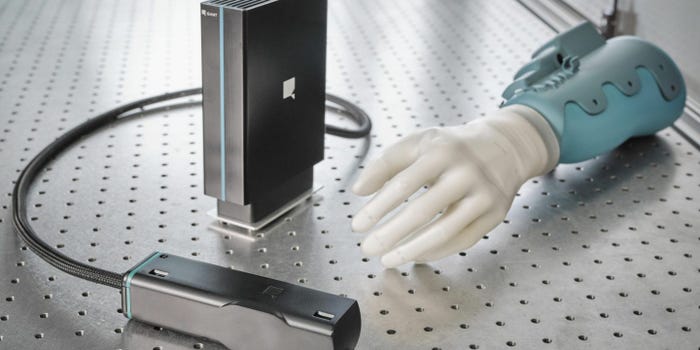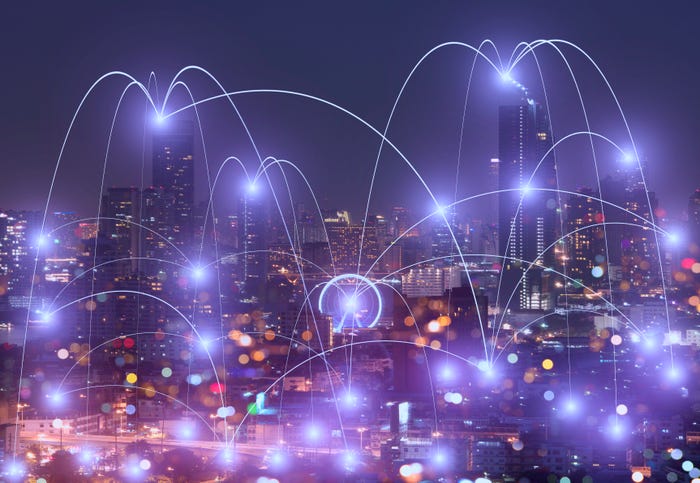The Internet of Things has moved beyond technology talk and toward business outcomes, even industrywide disruption like consumption-based pricing. But there’s real risk in "power by the hour" models, warns McKinsey’s Mark Patel.
September 27, 2016

A manufacturer of an industrial-strength soap dispenser had a novel idea: Add sensors and connectivity to the dispenser to monitor soap usage, give away the dispenser, and make money on replenishing soap. Thanks to the Internet of Things, the ability to monitor in real-time translates into the ability to predict when the customer needs to replenish—a practically insurmountable competitive advantage when selling consumables.
Disruptive business models are the great promise of IoT, right? Not so fast. The cost of putting connectivity over cellular on every soap dispenser adds up quickly, which McKinsey & Company found after doing the math. The manufacturer would not have been able to recover the cost of giving away the dispenser, even if it locked in the consumable sale over the lifetime of the hardware.
“The consumption-based model appears to be pretty powerful for unlocking a lot of opportunity, but we have to be careful how we get to it,” says Mark Patel, a McKinsey partner.
In B2B scenarios, the road to IoT and the digitization of the enterprise must be tread cautiously. Hidden costs, technical hurdles, cybersecurity threats and cultural pitfalls abound. Such challenges have sent many manufacturers retreating into the shadows. In January, McKinsey surveyed 300 manufacturing experts in Germany, Japan and the United States and found that only 16 percent have a digitization strategy in place. (At the upcoming IoT Emerge conference, McKinsey will be available to discuss the latest IoT trends.)
Related: View the IoT Emerge Agenda
Related: Take Advantage of Special Discounts for Readers! Register now using these discount codes:
• $200 off IoT Emerge Conference or Extreme Passes: IOT200NOW
• Complimentary Expo Pass: IOTEXPOPASS
Manufacturers shouldn’t remain idle, either. There are lots of IoT-related savings on the table. Industrial IoT can predict when equipment needs repair, McKinsey says, reducing maintenance costs by up to 40 percent and cutting unplanned downtime in half. Self-driving vehicles in mining raises productivity by 25 percent and reduces the number of workplace accidents. Tagging items in the supply chain improves efficiencies and flattens inventory.
And that’s just the beginning.
Connected equipment unleashes valuable usage data, which fuels product development. Little used features can be discarded, critical features improved, and new features brought to market. Usage data can be collected from multiple customers and analyzed to unearth industrywide trends and best practices. Data-based decisions replace intuition.
Beyond this lies the bigger prize: IoT usage data can spur new business models that shift competitive dynamics within industries, McKinsey says. The thinking goes, if IoT can predict maintenance, forecast demand and minimize unplanned downtime for valuable equipment, why not charge for the use of the equipment (as in, “power by the hour”) rather than sell it? Why not become a services company?
Such business disruption, though, isn’t for everyone. It wasn’t right for the soap-dispenser manufacturer, says McKinsey’s Patel. Internet of Things Institute sat down with Patel to talk about the challenges facing manufacturers and how they can chart a sensible path through IoT’s lightning storm.
Where are we with industrial IoT?
Patel: Now we can better articulate IoT—the technical implementation of sensors, connectivity, processing—and have moved beyond to business outcomes. We can predict things, develop models and apply analytics around real-time data flows. It’s much more about the potential economic impact, and the numbers get quite big. You can really take waste out of the system, in terms of lost productivity, lower asset utilization, quality, safety. It’s less about the connecting of things and more about getting the outcomes and some value.
All too often, I see situations where folks think the outcome is the analysis on a dashboard. That’s not an outcome, that’s information. The outcome is that the equipment is running with a higher utilization or higher quality.
Are manufacturers achieving business outcomes?
Patel: It’s still early. We have yet to see the outcome in most cases. Consider preventive maintenance. All the enthusiasm is about building models based on machine data to predict when [equipment] is going to fail and then change the planning of maintenance activities to prevent it. We’ve been building some of these predictive models for clients and showing what it takes to make them work. We figured out we can get the data, build these models, and usually get to a decent level of prediction, but actually affecting change in operational performance isn’t trivial.
What makes this so hard?
Patel: You need a maintenance team to do almost a 180-degree swing in the way they think about their jobs, type of work they do, and ability to interpret and act on analysis. When you go into industrial environments, folks say, “Our job is to apply our expertise when it fails.” It’s very different to say, “Actually, your job is going to be part data scientist, part service operator.” You’re actually trying to eliminate the need to have deep experts only available on demand. It will take a number of years, if not a generation, to really work through this.
Related: 2017 Salary Guide: IoT’s Captains, Data Stars, Security Pros, Developers
To get to the outcomes, we’re increasingly seeing you have to align folks end-to-end in the value chain in order to deliver it. For example, in healthcare, there might be a wearable device generating awesome data. But getting the payer, provider, physician, in-home care provider aligned to using, interpreting and applying the data isn’t easy.
For anyone in the chain, there’s a potential loss of value for them, such as a lost revenue opportunity or a reduction in the number of times you’re going to visit them. We have to make sure that everyone has incentive to get to that outcome and that you can align them together.
There’s a lot of talk about IoT driving consumption-based pricing. Should manufacturers move toward this model?
Patel: With consumption-based pricing models, you’ve got to watch out for a few things. If you’re a provider that’s not able to sufficiently participate and ensure the outcome, then you’re exposing yourself to risk in the process. In moving to a service model, you actually introduce a lot more volatility into the outcome for you.
For example, GE’s “power by the hour” engine, or managing the engine while it hangs on the wing, is extremely well-instrumented. There’s real-time data and visibility into all necessary parameters for making decisions about interventions on maintenance, on how things are being run, in order to ensure outcomes within a certain range.
That’s hard to achieve if you’re selling individual components or parts in a system. If you’re a pump manufacturer or motor drive manufacturer, it’s much harder to be close to the outcome in a way that ensures you’re going to get your share of it. There’s also the potential that you end up destroying some value along the way and never being able to get it back.
Sounds risky.
Patel: Everyone can do the math. A consumption-based model makes sense if you have a relationship with a customer where the majority of what they’re paying you for, on an ongoing basis, is an asset that has a well-defined functionality and purpose, like a tractor or car. You have a well-defined lifetime of that asset and a well-defined model for financing that you can underwrite to very easily. You’re also creating a contract under which it’s easy for you to layer on additional services, which may be small today but become bigger over time.
I think that’s a great situation.
In some areas, IoT is going to be the critical enabler for some of the most dramatic changes. When we talk about sectors that make physical things, IoT becomes a much bigger part of the digital story. Machine learning and robotics on automating activities are also going to have an incredible impact on overall productivity and society.
 Tom Kaneshige is editor of Five2ndWindow, an independent news channel covering digital business transformation and the new customer experience. You can reach him at [email protected].
Tom Kaneshige is editor of Five2ndWindow, an independent news channel covering digital business transformation and the new customer experience. You can reach him at [email protected].
About the Author(s)
You May Also Like


.png?width=700&auto=webp&quality=80&disable=upscale)
.png?width=300&auto=webp&quality=80&disable=upscale)


.png?width=300&auto=webp&quality=80&disable=upscale)